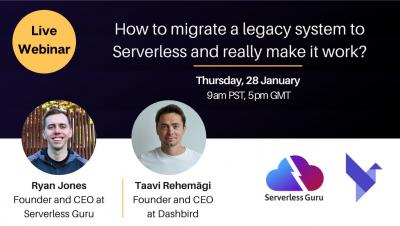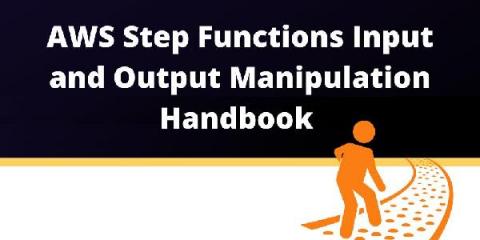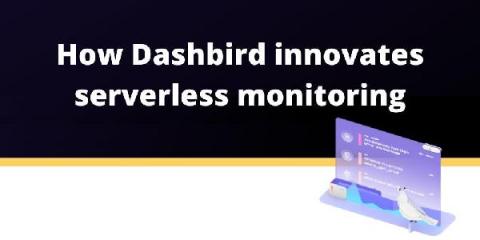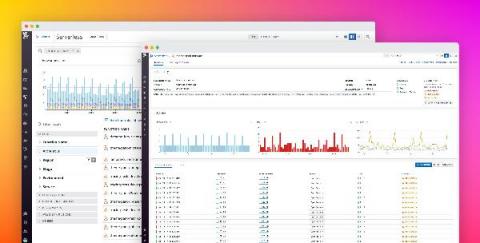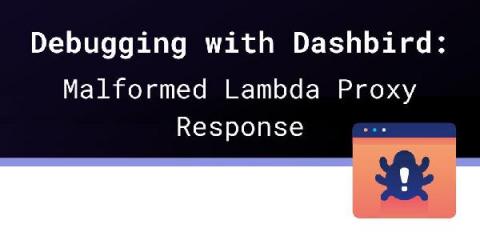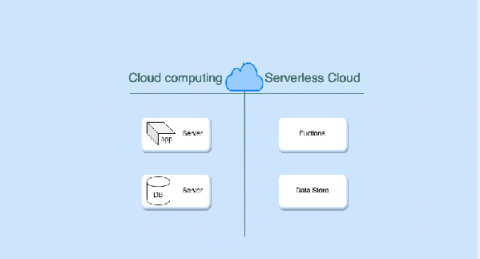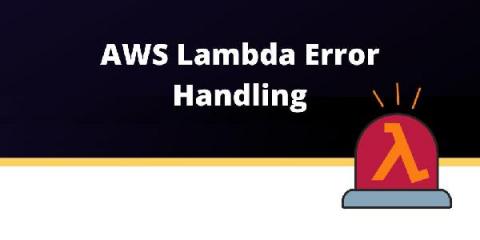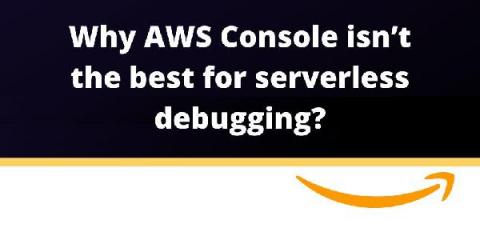Operations | Monitoring | ITSM | DevOps | Cloud
January 2021
Webinar: Why your next serverless project should use AWS AppSync
So, you want to monitor your serverless applications...
What to bear in mind before migrating to Serverless?
Serverless has been gaining more and more traction over the last few years. The global serverless architecture market was estimated at $3.01 billion in 2017 and is expected to hit $21.99 billion by 2025. The number is reflected in the increasing amount of enterprises starting to look for ways of decoupling their current monolithic architectures and migrating their stack to serverless. Read more about the popular enterprise use cases for AWS Lambda.
AWS Step Functions Input and Output Manipulation Handbook
In this handbook, we’ll explain the AWS Step Functions Input and Output manipulation. There’s plenty to talk about AWS Step Functions. There are numerous articles available online talking about AWS Step Functions ever since Step Functions were introduced in 2016. Most of these articles might make you think that Step Functions are actually an extension of the Lambda function, allowing you to combine several Lambda functions to call each other.
How to Save Hundreds of Hours on Lambda Debugging
Although AWS Lambda is a blessing from the infrastructure perspective, while using it, we still have to face perhaps the least-wanted part of software development: debugging. In order to fix issues, we need to know what is causing them. In AWS Lambda that can be a curse. But we have a solution that could save you dozens of hours of time. TL;DR: Dashbird offers a shortcut to everything presented in this article.
Why Are Some Engineers Missing The Point of Serverless?
Recently, I saw a video from a really great developer and YouTuber, Ben Awad, where he discussed Serverless not make any sense. Even though I really enjoyed the video, I am not sure if the author’s points about serverless are entirely valid, and I want to discuss them in this article.
Webinar How to Monitor Serverless Apps - Jan 2021
How to monitor and debug AppSync APIs
AWS AppSync is a fully managed GraphQL service that makes it easy for you to build scalable and performant GraphQL APIs without having to manage any infrastructure! With AppSync, you get a lot of capabilities out of the box. Such as the ability to integrate directly with DynamoDB, ElasticSearch, Aurora Serverless, and Lambda. AppSync also supports both per-request as well as per-resolver caching and has built-in integration with CloudWatch and X-Ray.
How Dashbird innovates serverless monitoring
At first glance, all serverless monitoring services seem similar and aim to solve the same problems. However, in Dashbird, we have made decisions that fundamentally differentiate us from our competitors since day one. Over time, those differences have magnified and we have found increasing confirmation and confidence in our approach. Dashbird product strategy is based on three core pillars.
Datadog automatically surfaces actionable insights into your Lambda functions
Serverless platforms like AWS Lambda have helped accelerate application development by removing the need to provision and manage infrastructure resources. However, serverless architecture presents new monitoring challenges. Because AWS Lambda handles underlying infrastructure for you, you don’t have access to system-level metrics. Instead, you have to monitor your Lambda functions for insight into their performance and resource usage.
Debugging with Dashbird: Malformed Lambda Proxy Response
One problem that pops up quite frequently when people try to build serverless applications with AWS API Gateway and AWS Lambda is Execution failed due to configuration error: Malformed Lambda proxy response. There is nothing worse than generic error messages that don’t tell you anything you need to fix the problem, right? And AWS isn’t particularly known for its error message design, if you can even call it that, let alone for giving you the means of fixing the problem.
Building, Testing and Deploying AWS Lambda Functions in Ruby
For quick, scalable, highly-available web services, few options compare to AWS Lambda. Just provide your code, add a little configuration, and you're done! In this article, Milap Neupane will introduce us to Lambda, show us how to get it working with Ruby and the Serverless Framework, and discuss reasons to use — or to not use! — Lambda in production.
How Cloud Operations helps users of Wix's Velo development platform provide a better customer experience
With more and more businesses moving online, and homegrown entrepreneurs spinning up new online apps, they’re increasingly looking for an online development platform to help them easily build and deploy their sites.
AWS Lambda Error Handling
In this article, we’ll be discussing everything you need to know about the basics of AWS Lambda error handling and some popular methods using StepFunctions and X-Ray. Regardless if you’re an AWS Lambda expert or if you’re a new Lambda user, there’s always something new to learn.
Deploying AWS Lambda with Docker Containers: I Gave it a Try and Here's My Review
Among all the new features and services that AWS announced during the re:Invent 2020, my favorites were definitely the AWS Lambda updates. And there were many! For example, your code execution is no longer rounded up to the nearest 100ms of duration for billing — you are now billed on a per millisecond. On top of that, AWS increased the Lambda’s memory capacity to 10 GB, and correspondingly the CPU capacity up to 6 vCPUs.
How to Expose and protect Logic App using Azure API Management (Part 5) - API operation documentation: Tags and Headers (Part 2)
Why AWS Console isn't the best for serverless debugging?
We all know that debugging serverless is time-consuming and hard and that AWS Console doesn’t make it much easier. CloudWatch isn’t quite known for its ease of use. Why? Well to start with, it has suboptimal search features, logs scattered across multiple buckets and groups, little visualization capability, and no structure of Lambda function invocations.


